|

NANJING CITY |
PAPER CUTTING
09
/ 02
~ 07 /
03
2010
There are numerous schools
of paper cutting in China, and Nanjing paper cutting
belongs to the Jiangnan School. According to historical
records, Nanjing paper cutting has been popular in folk
circles since the Ming Dynasty (1368-1644). Over the
years it gradually developed characteristic artistic
features and motifs.
The most significant aspect is the improvisation of the
craftsmen, who create on the spur of the moment,
following the urgings of their imagination. For this
reason, the art is truly a great live performance.
Zhang Fanglin is a
representative inheritor of the Nanjing paper cutting
tradition – an art that has now been listed as a
national-level item of Intangible Cultural Heritage. He
is the son of Zhang Jigen, an eminent Jinling paper
cutting artisan, and in addition to coming from such a
distinguished background, Zhang Fanglin has himself
engaged in paper cutting works for almost 50 years,
travelling abroad on numerous occasions to attend
international expositions and exhibitions and to give
instruction. One of the most important figures in the
craft of Nanjing paper cutting, Zhang’s works have
received high acclaim from people of many different
nationalities. |
| |
|

NANJING CITY |
QINHUAI LANTERNS
09 / 02 ~ 07 / 03
2010
As the saying goes: “Of all the
lantern shows, Qinhuai’s is the best.” In fact, the Qinhuai Lantern School is
one of the most significant within the traditional Chinese lantern arts. The
Qinhuai lantern, displayed between Lunar New Year and the Lantern Festival, is
innately artistic, incorporating such techniques as braiding, binding, painting,
calligraphy, paper cutting, shadow puppetry, embroidery and sculpture. In recent
years, lantern artisans have integrated elements such as shape, colour, light,
sound and motion into lantern making, adding charm to this long cherished folk
art.
Gu Yeguang is a representative
inheritor of the Intangible Cultural Heritage of Jiangsu Province. Born into a
Nanjing family that has practised lantern making for six generations, Gu
developed a great interest in the art from an early age. He has given live
performances in Germany, Singapore and Hong Kong on behalf of Nanjing. In 2009,
he participated in the Exhibition of Chinese Intangible Cultural Heritage &
Traditional Folk Crafts. |
| |
|

LIANYUNGANG CITY |
COPPER FORGING
09
/ 03
~ 04 /
04
2010
Copperware items were the
earliest metal implements to be used widely in China, and the prevalence of
their use soon gave rise to the art of forging copper. In recent years, copper
forging has developed from the making of simple utensils for daily use into the
fabrication of a wide range of artistic products, including relief panels,
free-standing sculptures, architectural decorations and delicate handicrafts. It
is widely appreciated for its special metallic texture, plain and simple styling
and rich variety in colour.
Zhou Chengyu, a senior artisan
who inherited the traditional craftsmanship of copper forging, has been awarded
the title ‘Artisan of Chinese Folk Arts’ by UNESCO and the Chinese Folk
Literature and Art Association. His works have received a number of
national-level and provincial-level folk arts prizes. In 2005, he represented
Beijing in an exhibition organised by art circles in celebration of the 8th
anniversary of the Hong Kong Handover. |
| |
|

LIANYUNGANG CITY |
CRYSTAL CARVING
09 / 03 ~ 04 / 04
2010
Crystal carving is a novel art
within the traditional crystal crafts. Its practitioners carve exquisite
pictures – depicting animals, flowers or birds – on natural crystal, using its
original shape for inspiration. They then affix it to another piece of composite
crystal to generate aesthetic, three-dimensional effects. The process of
creating these artworks is protected by patent in China.
Feng Shougan, the pioneer of
crystal carving and a Jiangsu artisan, was honoured with the title ‘Artisan of
Chinese Folk Arts’ by UNESCO and the Chinese Folk Literature and Art
Association. He has devoted much of his time to the design and creation of
traditional crystal carvings. |
| |
|

NANTONG CITY |
BLUE CALICO
06 / 04 ~ 02 / 05
2010
Blue calico is a handicraft in
which handmade, pure cotton fabrics are dyed with extracts from Chinese indigo
(dyer’s knotweed). Nantong blue calico integrates motifs used in folk arts such
as embroidery and paper cutting, creating a rich variety of artistic shapes in
blue and white colours. Overall, Chinese blue calico adheres to a very high
standard, with a rich variety of prints and outstanding craftsmanship. For this
reason it was inscribed on the first list of national-level Intangible Cultural
Heritage.
Chinese artisan Wu Yuanxin
lectures Masters students at Suzhou University and is Curator of the Nantong
Blue Calico Museum. Since the age of 17, Wu has engaged in dying, printing and
block-printing blue calico. Over the past three decades, he has striven to
preserve and pass down the art of blue calico. He was recognised as an
outstanding inheritor of Chinese folk arts by the China Federation of Literary
and Art Circles (CFLAC) and the Chinese Folk Literature and Art Association.
Among his publications is the work An Overall Collection of China Blue Calico
Vein Patterns. |
| |
|

NANTONG CITY |
BANYAO KITES
06 /
04 ~ 02
/ 05
2010
The Banyao Kite of Nantong City
is acclaimed for its exquisite shape, skilful workmanship and the unique sonic
effects it produces. Named for its characteristic flat shape, the Banyao Kite is
renowned as a ‘Symphony in the Air’ because of the numerous whistles that
emanate from the attached gourds and shells, designed to produce loud, clear
tones when the kite is flown. Banyao Kites are mostly hexagonal, bright in
colour and larger in size than ordinary kites. The art form has been inscribed
on the national-level Intangible Cultural Heritage list.
Guo Chengyi, an artisan from
Jiangsu, is a representative inheritor of the national-level Intangible Cultural
Heritage Project. He has engaged in kite-making for some 40 years under the
guidance of his father, Guo Wenhe, himself a famous craftsman in the art. Apart
from making whistling kites, Guo Chengyi dedicates himself to designing kites
with innovative shapes and remains the major inheritor of ‘Guo’s Kites of
Nantong’. He currently works at the Nantong Kite Museum, engaging in kitemaking
and related research projects. |
| |
|
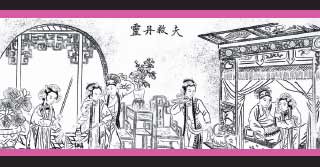
ZHENJIANG CITY
|
PORCELAIN CARVING
01
/ 06 ~
27 /
06
2010
The prevalence in China of
porcelain carving dates back to the reign of Emperor Qianlong (1735-1796) in the
Qing Dynasty. The term refers to the craft of carving the surface of porcelain
with specially designed, heated cutting tools. Carvings of mountains, water,
flowers and birds are all vividly expressed by the art’s practitioners. As
porcelain carving integrates complex skills, unique features and a blend of arts
such as stone inscription, calligraphy and painting, it is attached high
aesthetic and collectible value.
Applying his profound knowledge
and his deft calligraphy and painting techniques to porcelain carving, Shao
Tongyi is able to produce exquisite images, using cutting tools in the place of
brushes. His skills earned him the honour of being named an ‘Artisan of Chinese
Folk Arts’ by UNESCO and the Chinese Folk
Literature and Art Association. His works have received a number of
national-level and provincial-level folk arts prizes. In 2006, he was invited to
conduct exchanges in Germany and was hailed as the first person to introduce the
art of Oriental porcelain carving to Europe |
| |
|
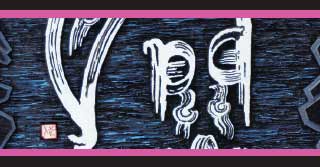
LIANYUNGANG CITY |
FEIBAI CALLIGRAPHY
01/ 06 ~
27 /
06
2010
Feibai calligraphy, also known as
Feibo, is a special style of ancient script that originated in the Eastern Han
Dynasty (25-220 AD) and was prevalent through the Wei, Jin, Tang and Song
dynasties (220-1279). Featuring vigourous and graceful strokes, this script is
rich in artistic imagery and projects strong visual impact. After the fall of
the Northern Song Dynasty (1127), however, Feibai calligraphy experienced a
gradual decline through the ensuing Yuan, Ming and Qing dynasties (1271-1911),
and today very few people can master it.
Ge Shaolin (aka Qilinzi) is a
representative inheritor of the Feibai calligraphy tradition, an art listed as
part of the Intangible Cultural Heritage of Lianyungang City. Over the last
three decades, Ge has devoted himself to research and the promotion of Feibai
calligraphy. He held a solo exhibition in 2008, and his works have received a
number of awards in various significant calligraphy competitions. |
| |
|
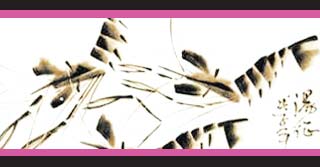
SUQIAN CITY |
PYROGRAPHY
29 / 06 ~ 25 / 07
2010
Pyrography is the art of painting
with burn marks created by the controlled application of heated objects. It
dates back to the craft of pokerwork, known as luohua or tanghua, in
which the marks were created with traditional soldering irons heated in
furnaces. Later, with the invention of electric soldering irons, the practice of
traditional pokerwork developed into a sophisticated decorative art for
materials such as wood boards, Xuan paper and silk fabrics. Pyrographic works
feature dark brown images that are simple, elegant, beautiful and unique in
style.
Renowned as ‘China’s most
outstanding pyrographic artist’, Tang Zheng is now a director of the China
Calligrapher and Painter Association and is ranked as a National First-class
Artist. A graduate of the Chinese Painting and Calligraphy University, Tang has
absorbed influences from a great number of masters and has developed his own
unique style of pyrography, now under patent protection in China. His works have
been collected by the Great Hall of the People in Beijing, the Diaoyutai State
Guesthouse and the Japan National Institute of Arts, among other institutions. |
| |
|
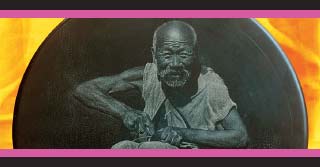
SUQIAN CITY |
STONE CARVING
29 /
06 ~ 25 / 07
2010
The images, carved onto stones, are as vivid and
delicate as photographs. Beginning by honing and polishing a stone, often of
pure colour, the artisans then outline the image that is to be carved onto the
polished surface. Using special tools, they create lifelike carvings based on
the principle of chiaroscuro. Stone image carving is noted for its fine lines
and detail and is widely used for murals, stele portraits and desk ornaments.
A descendant of stone carving artisans, Lu Yuchen
has inherited traditional stone carving skills from former generations and has
created his own innovative style. His works feature an integration of
photography, painting and stone carving in addition to various other carving
techniques with abundant themes. He has created a diverse array of artworks
including both plain and three-dimensional stone carvings. In 2005, he held a
solo art exhibition in Singapore which gained him wide popularity. |
| |
|
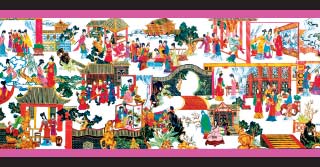
YANCHENG CITY |
WHEAT STRAW COLLAGE
27 / 07 ~ 22 / 08
2010
Originating from the Sui and Tang
dynasties (581-907 AD), wheat straw collage flourished in the Song Dynasty
(960-1279) and continued through the Ming and Qing dynasties (1368-1911). In
this folk art – one that is unique to China – wheat straws enriched with natural
lustre, lines and textures are pieced together to generate images with vivid
three-dimensional effects. The images are durable and bright in colour. The
craft can be applied to plaques, screens and tourist souvenirs or inlaid in
wooden furniture for decorative purposes.
Shen Sheguo, recognised as an
‘Artisan of Chinese Folk Arts’ by UNESCO and the Chinese Folk Literature and Art
Association, has made great accomplishments in some 20 years of assiduous
research in the field. In September 2007, he held a solo painting exhibition in
Mons, France, and was granted a Medal of Honour by the French Republic. His
exhibited works – many of which now reside in national collections – have
received awards in various provinces, cities and countries. |
| |
|
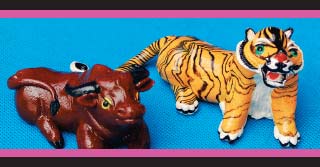
YANCHENG CITY |
DOUGH FIGURINE SCULPTURE
27 / 07 ~ 22 / 08
2010
The history of dough figurine
sculpture can be traced to the imperial cuisine of the Tang Dynasty (618–907).
In the past, it was an art mastered by a very few people who made their living
as craftsmen. By rubbing, kneading, pulling and moulding a mixture of glutinous
rice flour, wheat flour and preservatives, artisans can immediately create
fascinating dough figurine sculptures resembling characters or animals.
Guo Liming is a native of
Gongxing Town in Yancheng City. He has engaged in the handicraft of dough
figurine sculpture for nearly three decades and has attained a very high level
of skill. Under his influence and with his promotion, the traditional craft of
dough figurine sculpture has gained wide popularity in his hometown, heralded as
one of the ‘top ten cultural towns in Yancheng City’. Guo has been designated a
provincial, municipal and county representative in attendance at various
exhibitions, expositions and fairs both at home and abroad, where his skills
earned him great respect within artistic circles. |
| |
|
BACK |







